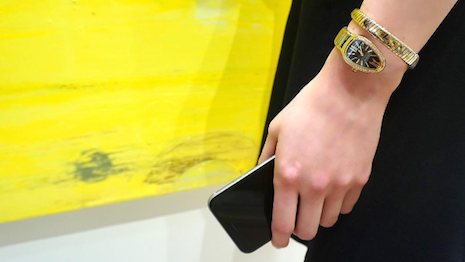
Women are more interested in mobile shopping than men. Image credit: Neiman Marcus
By Mickey Alam Khan
Men and women continue to exhibit staggering differences in shopping behaviors, with recent findings proving men’s aversion to online shopping.
According to a report from First Insight, 40 percent of women frequently shop on mobile devices but only 22 percent of men say they do. Luxury retailers that cater to men should focus on creating an effective in-store strategy, since this is where they prefer to shop.
“I think overall the biggest thing is that retailers and brands need to understand that these disruptors are driving the majority of shoppers to become more price sensitive,” said Greg Petro, CEO of First Insight. “Yes, men and women are shopping differently.
“However, a retailer or brand will win if they strive to understand their customers so they can provide the right products at the right price,” he said. “This has been proven time and time again.”
Battle of the sexes
While men prefer to do their shopping in stores rather than through digital devices, they do however look to the Internet for their discounts.
About 30 percent of male survey takers claimed they often shop at discount retailers online, but only 22 percent said they would shop at bricks-and-mortar discount retailers.
 Mobile shopping was huge last year. Image credit: Neiman Marcus
Mobile shopping was huge last year. Image credit: Neiman Marcus
Women prefer to shop in-store discount shops such as TJ Maxx, with 30 percent saying they shop at the store. Only 13 percent of men said they shopped at the discount retailer.
Most affluent women contribute just as much to their household’s income as men do, according to YouGov.
Fifty-five percent of households surveyed in YouGov’s Affluent Perspective 2017 report are dual-income, meaning that more women contribute to their family’s economic status than do not. As the luxury-consuming class continues to diversify with women and people of color earning more money than ever before, luxury brands need to be able to diversify their advertising efforts accordingly to reach these other demographics (
see more).
Purchasing on Amazon is much more popular with women as well, with 60 percent claiming to shop on the ecommerce giant and only 46 percent of men doing so. Also, 54 percent of women subscribe to Amazon Prime, Amazon’s subscription service for free shipping and discounted products, while only 43 percent of men are members.
 Amazon Echo helps consumers shop via voice technology
Amazon Echo helps consumers shop via voice technology
However, when it comes to researching products through voice activation with artificially intelligent speakers such as Amazon’s Alexa and Google Home, men more frequently used these features. Forty-six percent of women use AI assistants to check out product prices, while 53 percent of men do.
Future of retail
The evolving definition of the connected consumer together with shifting behavior and expectations will shape the future of retail.
Walker Sands’ fourth annual “Future of Retail” report uncovered three major trends that will spur changes to the current retail model as the industry faces mounting challenges. Walker Sands found that nearly half of surveyed consumers prefer to shop via digital channels, including mobile, desktop and voice-controlled devices, an increase of 48 percent from last year’s report (
see more).
“The findings from this report can help retailers meet consumers where they are," First Insight’s Mr. Petro said. "Men’s retailers may want to focus more of their investment on the in-store experience.
“Women might only want to see a few of the best-selling items on display," he said. "Chances are they’ve already looked online or they’re planning to make a decision online later.
“Full-priced retailers targeting women purchasers would benefit from employing dynamic pricing tools and understanding how their price points compare to others’ in the market, particularly Amazon, since women are so often price comparing and purchasing via mobile devices."
 Women are more interested in mobile shopping than men. Image credit: Neiman Marcus
Women are more interested in mobile shopping than men. Image credit: Neiman Marcus
 Mobile shopping was huge last year. Image credit: Neiman Marcus
Mobile shopping was huge last year. Image credit: Neiman Marcus Amazon Echo helps consumers shop via voice technology
Amazon Echo helps consumers shop via voice technology